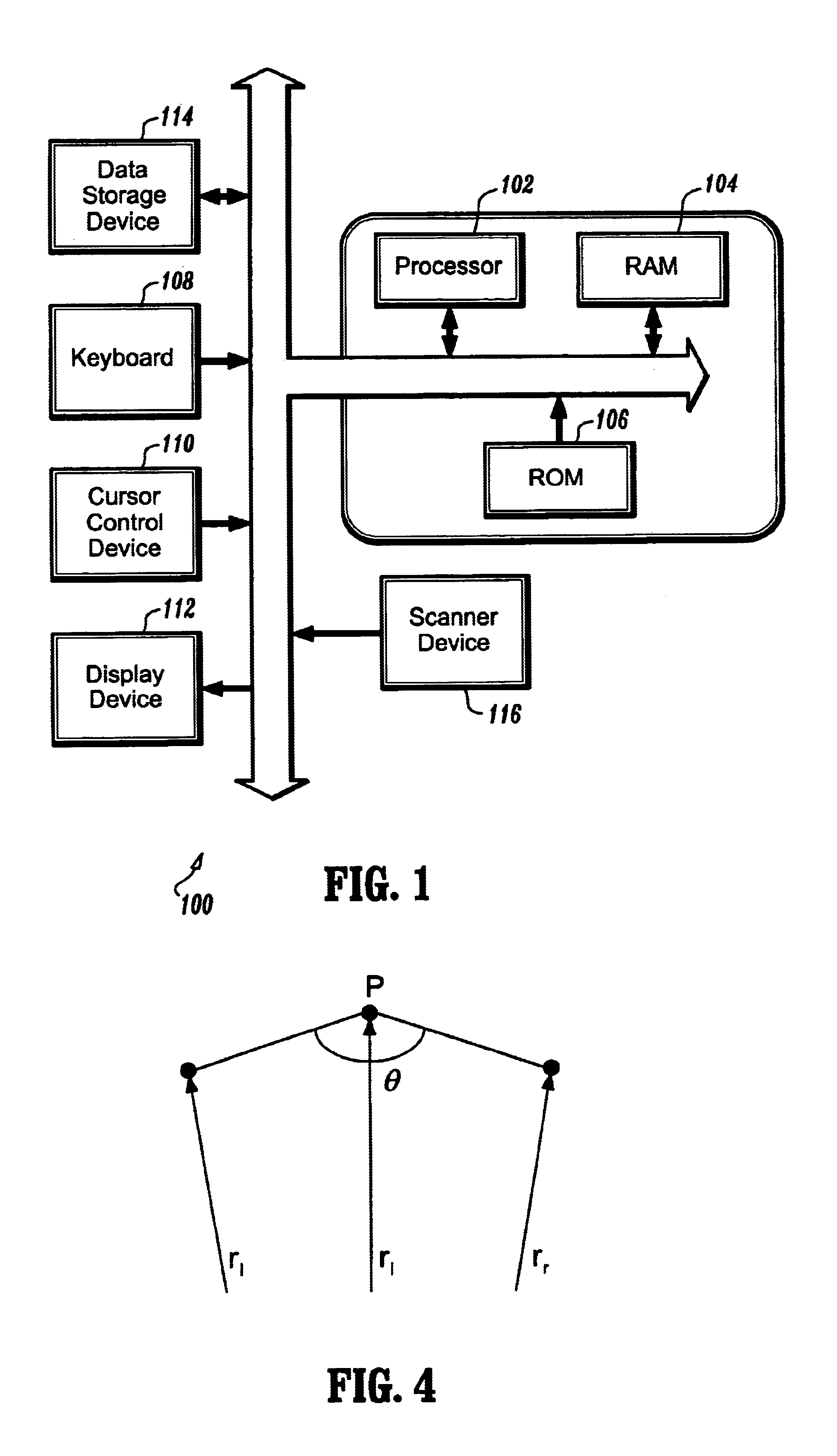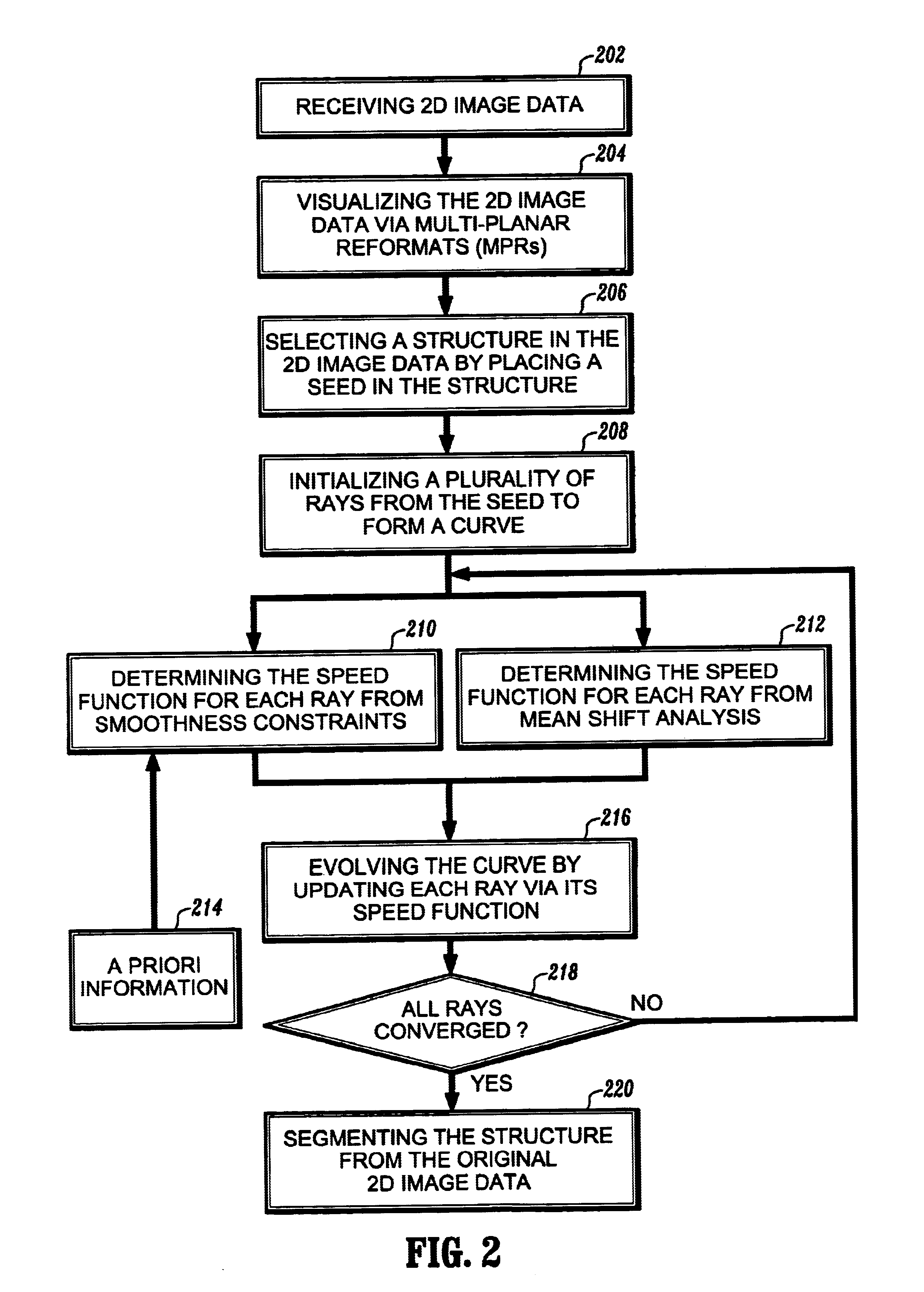Vessel detection by mean shift based ray propagation
a mean shift and ray propagation technology, applied in the field of computer vision and imaging systems, can solve the problems of increasing the number of fundamental difficulties, unable to perform topological changes, and the use of snake or balloon methods requires extensive user interaction, so as to enhance ct and mr images, the effect of robustness and efficiency
- Summary
- Abstract
- Description
- Claims
- Application Information
AI Technical Summary
Benefits of technology
Problems solved by technology
Method used
Image
Examples
Embodiment Construction
[0033]Preferred embodiments of the present invention will be described hereinbelow with reference to the accompanying drawings. In the following description, well-known functions or constructions are not described in detail to avoid obscuring the invention in unnecessary detail.
[0034]A basic problem in the segmentation of vessels from the background of an image is accurate edge localization, i.e., finding a boundary of the vessel, in the presence of noise. Most CT and MR images have significant noise levels. The present invention employs one dimensional mean shift analysis along a set of rays projecting radially from a user-placed seed point in the image. Noise along these rays is eliminated while edges are preserved. The envelope of these rays represents an evolving contour or curve which converges to the vessel lumen boundary. The method is parsimonious, examining only pixels along and adjoining these rays and the seed point.
[0035]It is important that the boundary determined by th...
PUM
 Login to View More
Login to View More Abstract
Description
Claims
Application Information
 Login to View More
Login to View More - R&D
- Intellectual Property
- Life Sciences
- Materials
- Tech Scout
- Unparalleled Data Quality
- Higher Quality Content
- 60% Fewer Hallucinations
Browse by: Latest US Patents, China's latest patents, Technical Efficacy Thesaurus, Application Domain, Technology Topic, Popular Technical Reports.
© 2025 PatSnap. All rights reserved.Legal|Privacy policy|Modern Slavery Act Transparency Statement|Sitemap|About US| Contact US: help@patsnap.com



